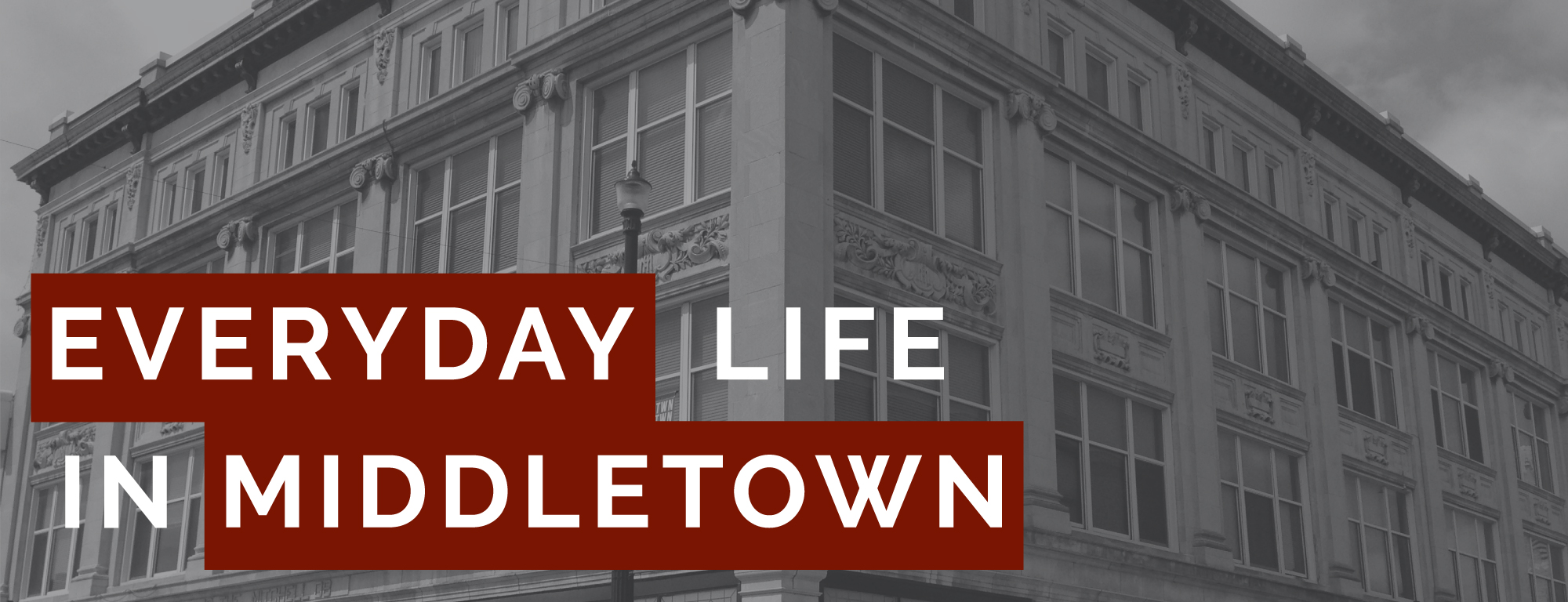5/15/19
One of the nice things about living in 2019 is the ease of travel and understanding across the globe. On May 15, I wasn’t in Muncie but in Spain. I got to travel there for an academic conference in Zaragoza to do a presentation, and I spent a couple of days site-seeing in Barcelona on both ends of the conference. It was my first time going abroad alone, and I speak no Spanish or Catalan. I could regale you with the details of my day, but instead, I thought I would make a list of how everyday life is different in Spain than in Muncie with some things about my day scattered in. Keep in mind, of course, that these are only observations of a traveler on Day 2 of her trip.
- Eating
In the U.S. I usually eat dinner around 6 pm, sometimes a little earlier or a little later. In Spain, dinner is much later. It is in other places in Europe, but on other trips I have still eaten around 7ish. Here restaurants often close during the middle of the day and reopen around 7:30 or 8:00 pm. That doesn’t mean dinner is served then, though. People here start off with drinks, then tapas, then maybe dinner. One place I went, we had tapas around 8 but the dinner menu didn’t begin until 9 pm.
Eating is a social event. It can be in the U.S. for sure, but it isn’t always. In Spain, at least eating out is social. This particular day I went on a food tour in Barcelona and my guide took us to a tapas place. He said “never sit for tapas.” You are supposed to be moving around, socializing. Tapas places have what we would call cocktail tables. They have seats, too, but my guide insisted that you should stand. Tapas is much like bar hopping in the U.S. You meet friends somewhere, someone orders the first round of tapas, then maybe you go to another restaurant for more, spending hours just socializing and eating. A few days later at the conference, I would spend several hours doing this with my new conference friends, and it was a great night.
What I ate at the tapas place on my food tour that day:

Anchovies, Spanish Omelet with potato

Chickpeas with tomato & parsley

Bread w/ tomato, Sausage on mashed celery root, Meat & peppers
Many restaurants have menus that contain dishes that are for multiple people or prix fixe menus that are for a certain number. This particular night, I arrived in Zaragoza and found that people didn’t speak English as they did in Barcelona. I tried to figure out where to eat and saw a place that looked nice, so I entered and said “one.” The waitress said, “one what?” I indicated that I wanted to sit, and she asked me what I wanted to drink. At this point, mind you, it was maybe 7:30 pm or so and no one was inside the restaurant at all. There were two groups of people sitting outside just drinking wine and beer. I got a coffee. The waitress brought it with the check, no menu. When I looked up the menu online it was all for multiple people with minimums, so I think that was her way of telling me I couldn’t order there as a solo person. I went back to the hotel and ordered room service.
Speaking of coffee, I don’t know how they always make coffee with milk so good. Is it the steamed milk? The coffee itself? But you don’t get a huge thing of coffee here, just a small cup with milk and you drink it all day long.
Another thing about eating out is no tipping. Waitresses make a good wage without that. It’s so much simpler and better.
Markets are all over here, and they are absolutely filled with fresh food. The first day I went to a more touristy market and was impressed, but my food tour guide took us to what is more of a regular grocery. He says that the difference is grandmothers. All our food, he says, comes from grandmothers and is passed down. The outside looks like I might expect for a grocery store anywhere, but inside there are stands with fresh meat, fish, fruit, cheese. And each one is at a stand, and after the comment about grandmothers, I do notice that a lot of the people working the stands are older.
I remember how my grandmother never left her apartment and just ate Lean Cuisines.

Image from a “supermarket” in Barcelona with all the meat.
Paella, my guide explains, was really created during lean times as a way to combine whatever ingredients were around. On our food tour we have seafood paella with a lot of squid, and the guide specially requests that they add the squid ink because he says it really makes a difference.
- Sleeping & Schedules
Multiple people tell me that studies have shown that people in Spain get an hour less sleep than the rest of Europe. A bit part of what is happening is a cultural shift. Is siesta a thing? Yes and no. It was a big part of the culture, but that culture is shifting in such a global economy. So, the people do a typical workday schedule as we would in the U.S., but then they still have dinner and stay up late. At the conference–the day after this one, things start at 8:30 am and then we have panels all the way until 8:30 pm when there is dinner. There is a coffee break at 11:30 am and a lunch break at 2 pm. It’s intense. I don’t get back to my hotel until midnight, and I’m wide awake from having finished dinner not that long ago and having been engaged all day long. In Muncie, I tend to start winding down around 10 and fall asleep around 11:30 pm. I can see why Spaniards end up with less sleep. It makes me a bit sad because I think the old ways seem pretty good. Since I’m an academic and can often flex my schedule, I actually prefer to get up and work, then take a longer break in the afternoon, and then return to work before dinner, but I feel like I never have quite enough time before the evening gets started. I could do a schedule of working in the morning, relaxing in the afternoon and then working more and having a late night and dinner. But it seems like the afternoon naps and relaxation are what is going away, so days here seem long and full.
- Efficiency & Environmentalism
I don’t know why the U.S. is SOOOO bad at this and Europe is so much better. How did our systems develop differently that this is the case? It’s in big things, like public transportation. Why don’t we have high-speed trains? But it’s in little everyday things, too. Lights that come on automatically when you walk by them, for example, and don’t get left on all the time. All the toilets have the dual flush feature. I think it’s brilliant that in hotels you have to insert your key to turn on the lights. Saves people just leaving lights on but also you don’t forget where you put the key! Even on public transportation, doors don’t automatically open, you have to press a button. I bet these little power saving things save a lot.
It’s not all just environment, either. I notice so many little things that seem so much better designed than in the U.S. Today I arrive in Zaragoza and at the fancy hotel there, the controls for the shower are brilliantly easy to use. There’s a super nice separate rain shower and deep tub. In the U.S., it seems, everything must take up more space to be nice.
One thing I don’t like as much in Europe, but that I can see the practical design in is the way larger beds are basically two smaller twin beds put together. It’s fine for me, but with my wife, I end up sleeping right in the middle of the bed, which would be the crack here. So, I wonder if that’s how all the beds are and if people sleep differently. The pillows here are all longer, more like body pillows. So, just little mundane differences.
- Taboos/Norms & Other Random Observations
This day I took a train from Barcelona to Zaragoza and there is a movie playing. I’m not watching it, but I can’t help catching glimpses of it here and there. It seems to be about disturbing art. So, there are images of penises and then a nude guy wrapping himself in cellophane. Just playing on the train. I remember my high school bus trip to Florida where we got in trouble for playing the video of Pink Floyd’s the Wall on the bus. I don’t remember if it was this day or another day but walking by a sex shop with the merchandise in the window is also not taboo.
Also, it was from another day, but I had to share a comparison photo parallel parking in Spain and in Muncie.

Two cars bumper to bumper in small spots in Barcelona

Two cars in huge parking spaces that are very far apart along Walnut street in Muncie.

